AXI Video Direct Memory Access v6.2
Table of Contents
IP Facts
Ch. 1: Overview
Feature Summary
AXI4 Compliant
AXI4 Data Width
AXI4-Stream Data Width
32 Frame Buffers
Data Realignment Engine
Genlock Synchronization
Asynchronous Channels
Frame Sync Options
Dynamic Clock Frequency Change on AXI4-Stream Interface
Frame Advance or Repeat on Error
Applications
Unsupported Features
Licensing and Ordering Information
Ch. 2: Product Specification
Performance
Latency
Throughput
Resource Utilization
Port Descriptions
Timing Diagrams
Example Read (MM2S) Path Timing
Example Write (S2MM) Path Timing
Register Space
Endianess
AXI VDMA Register Address Map
Memory Map to Stream Register Details
Register Access Type Description
MM2S_VDMACR (MM2S VDMA Control Register – Offset 00h)
MM2S_VDMASR (MM2S VDMA Status Register – Offset 04h)
MM2S_REG_INDEX (MM2S Register Index – Offset 14h)
PARK_PTR_REG (Park Pointer Register – Offset 28h)
VDMA_VERSION (AXI VDMA Version Register – Offset 2Ch)
Stream to Memory Map Register Detail
S2MM_VDMACR (S2MM VDMA Control Register – Offset 30h)
S2MM_VDMASR (S2MM VDMA Status Register – Offset 34h)
S2MM_VDMA_IRQ_MASK (S2MM Error Interrupt Mask – Offset 3Ch)
S2MM_REG_INDEX (S2MM Register Index – Offset 44h)
MM2S Vertical Size (MM2S_VSIZE – Offset 0x50)
MM2S Horizontal Size (MM2S_HSIZE – Offset 0x54)
MM2S Frame Delay and Stride (MM2S_FRMDLY_STRIDE – Offset 0x58)
MM2S Start Addresses (Offsets 0x5C to Maximum Offset 0x98)
S2MM Vertical Size (S2MM_VSIZE – Offset 0xA0)
S2MM Horizontal Size (S2MM_HSIZE – Offset 0xA4)
S2MM Frame Delay and Stride (S2MM_FRMDLY_STRIDE – Offset 0xA8)
S2MM Start Addresses (Offsets 0xAC to Maximum Offset 0xE8)
Genlock Synchronization
Genlock Master
Genlock Slave
Dynamic Genlock Master
Dynamic Genlock Slave
Errors
VDMAIntErr
VDMASlvErr
VDMADecErr
Line and Frame Errors
Ch. 3: Designing with the Core
General Design Guidelines
Clocking
Frequency
Dynamic Resolution
Resets
Programming Sequence
Interrupts
Ch. 4: Design Flow Steps
Customizing and Generating the Core
Basic Options
Address Width (32-64)
Frame Buffers
Enable Write Channel
Memory Map Data Width
Enable Read Channel
Advanced Options
Enable Asynchronous Mode
Write Channel Options
Output Generation
Constraining the Core
Required Constraints
Device, Package, and Speed Grade Selections
Clock Frequencies
Clock Management
Clock Placement
Banking
Transceiver Placement
I/O Standard and Placement
Simulation
Synthesis and Implementation
Ch. 5: Example Design
Implementing the Example Design
Test Bench for the Example Design
Simulating the Example Design
Setting up the Simulation
Simulation Results
Ch. 6: General Use Cases
Appx. A: Migrating and Updating
Migrating to the Vivado Design Suite
Upgrading in the Vivado Design Suite
Appx. B: Debugging
Finding Help on Xilinx.com
Documentation
Answer Records
Technical Support
Vivado Design Suite Debug Feature
Hardware Debug
Appx. C: Additional Design Information
FRMPTR_STS (MM2S and S2MM Current Frame Pointer Status – Offset 24h)
S2MM HSIZE Status Register S2MM_HSIZE_STATUS (offset 0xF0h)
S2MM VSIZE Status Register S2MM_VSIZE_STATUS (offset 0xF4h)
Appx. D: Frame Pointers Gray Code Outputs
Appx. E: Additional Resources and Legal Notices
Xilinx Resources
References
Revision History
Please Read: Important Legal Notices
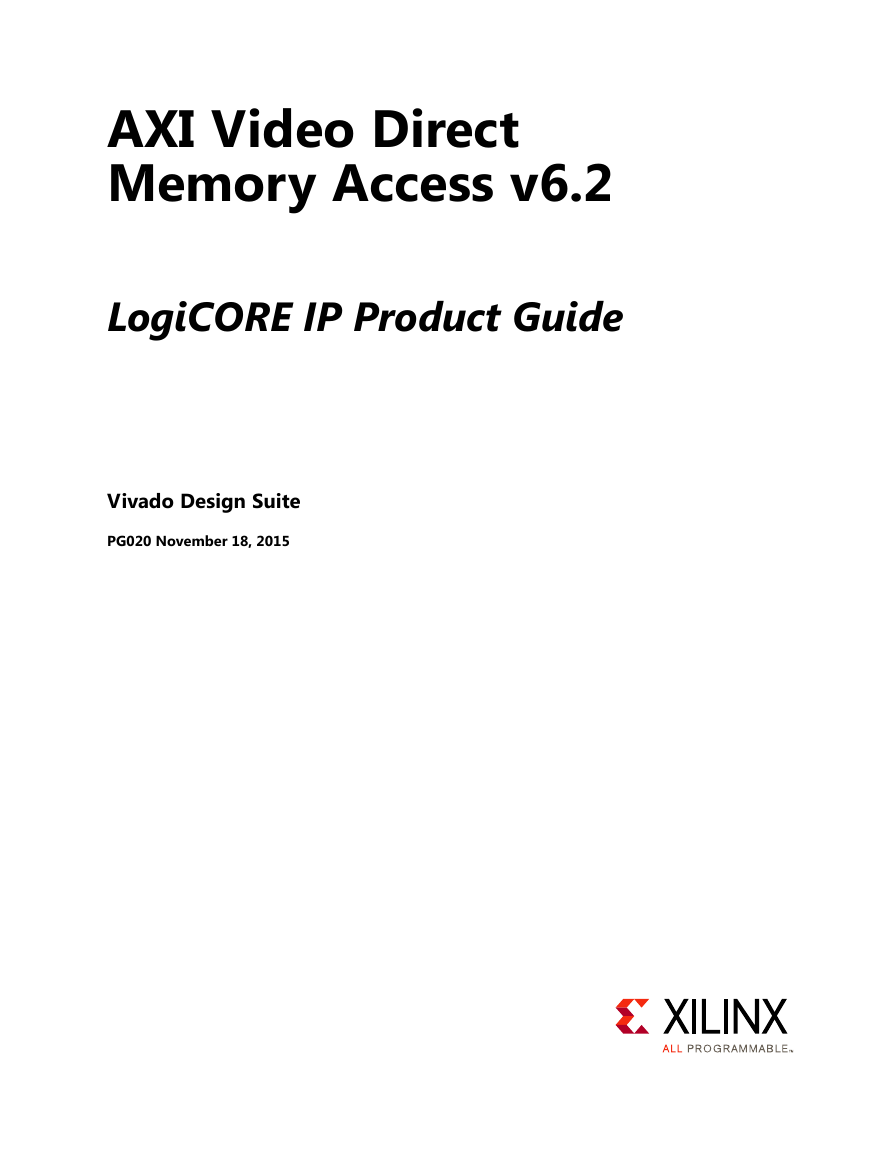
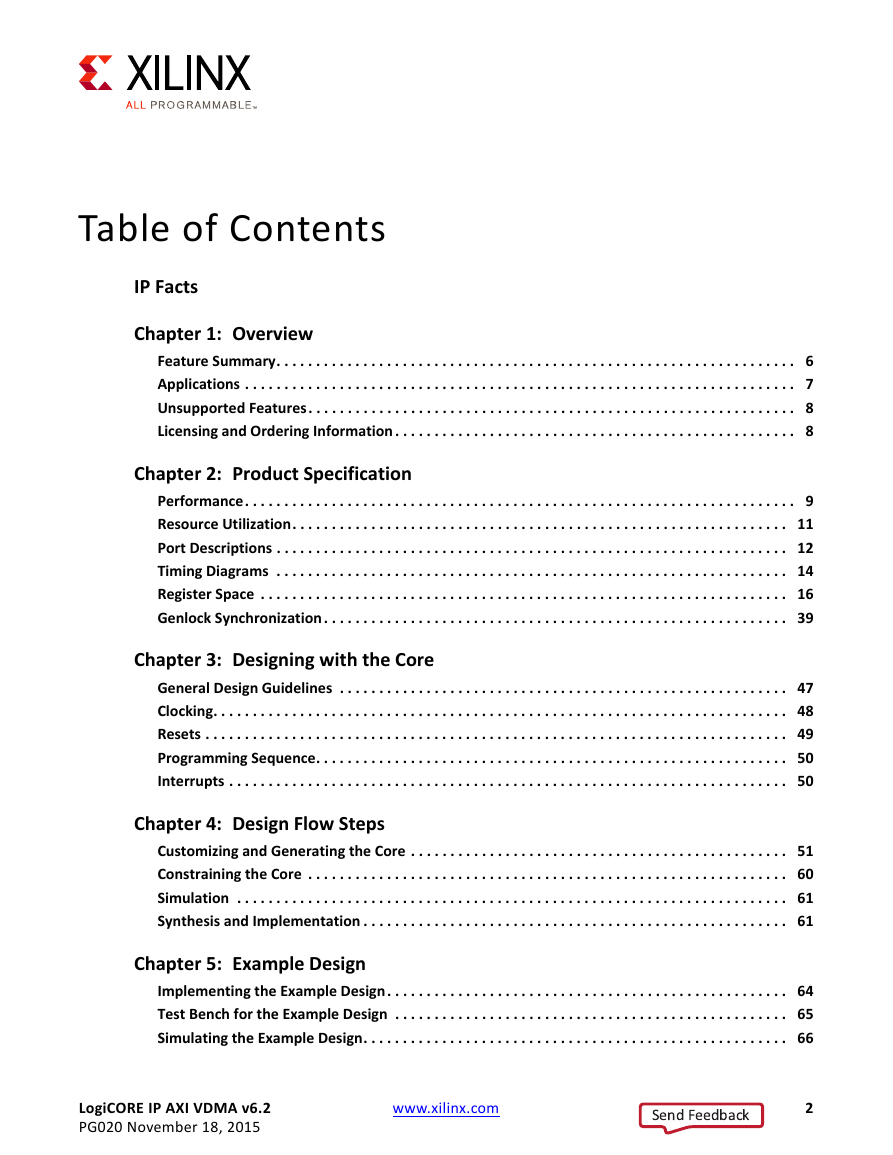
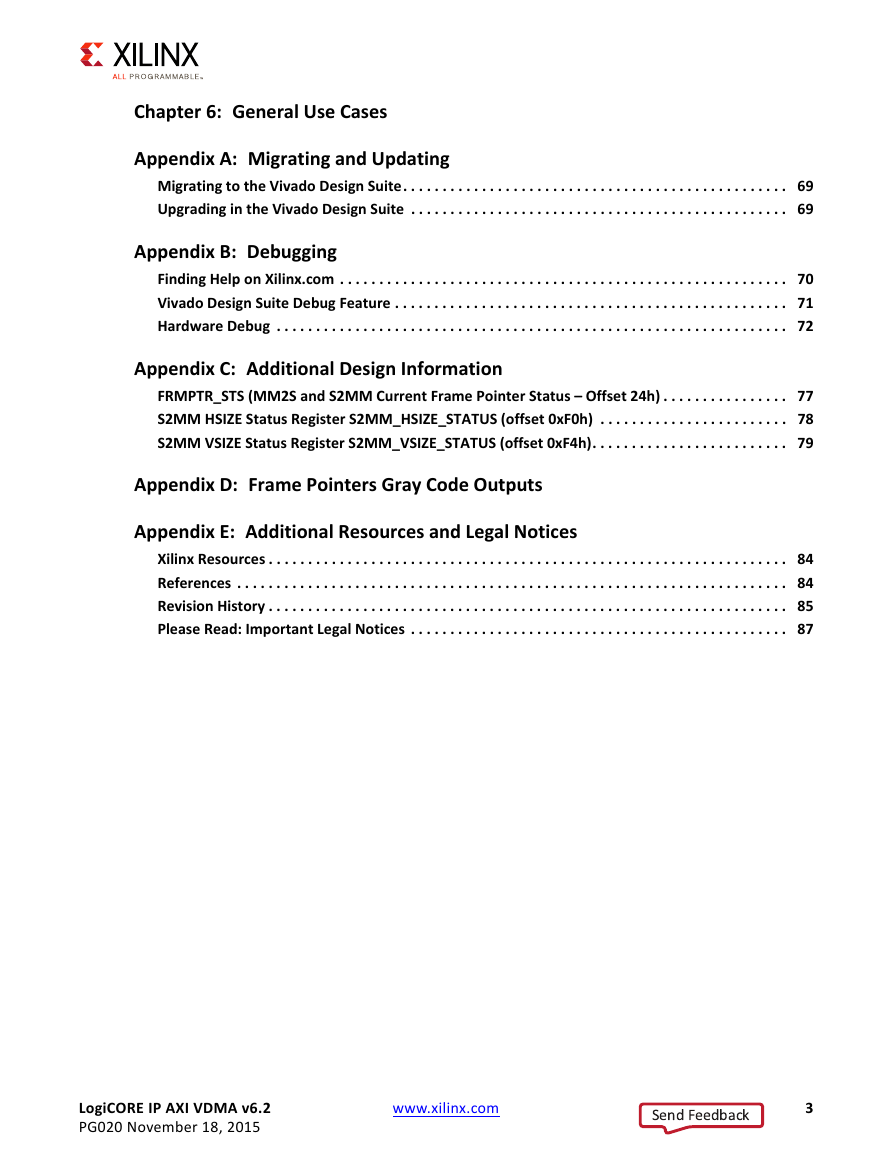
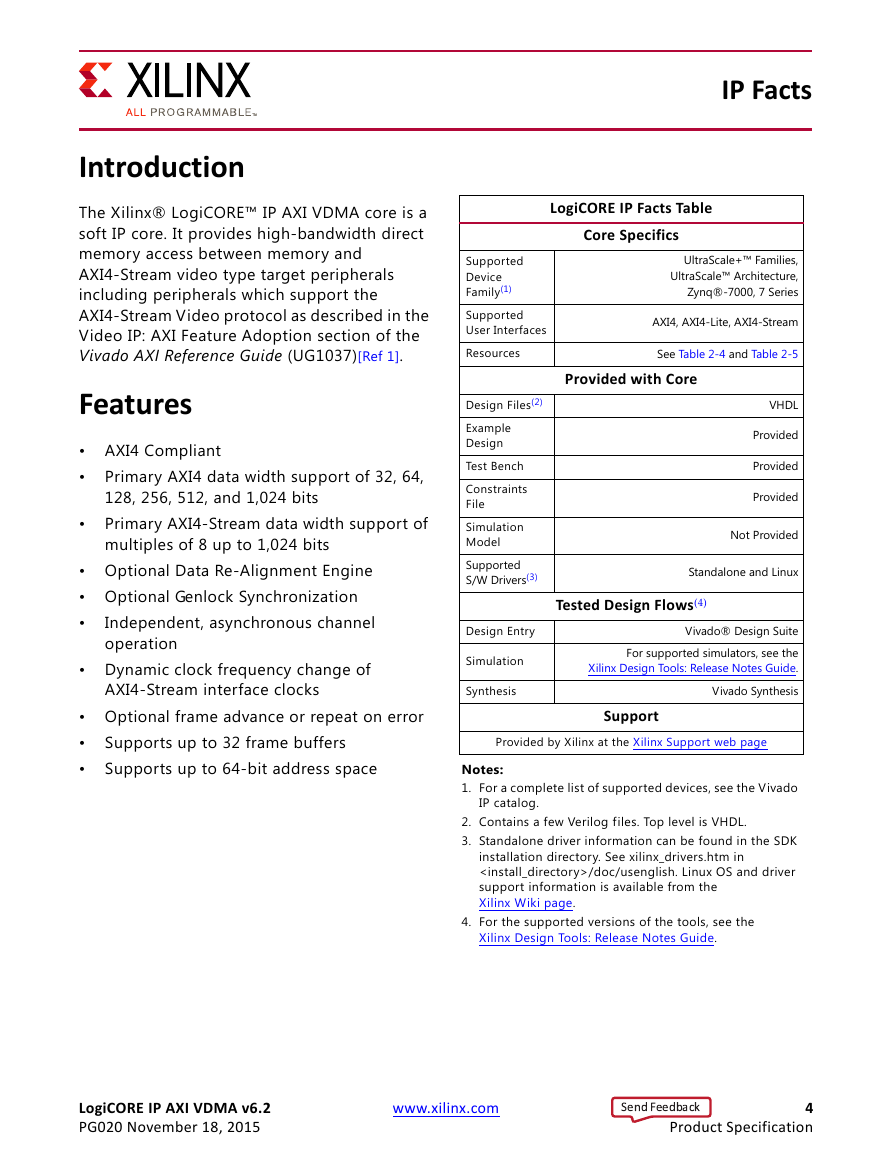
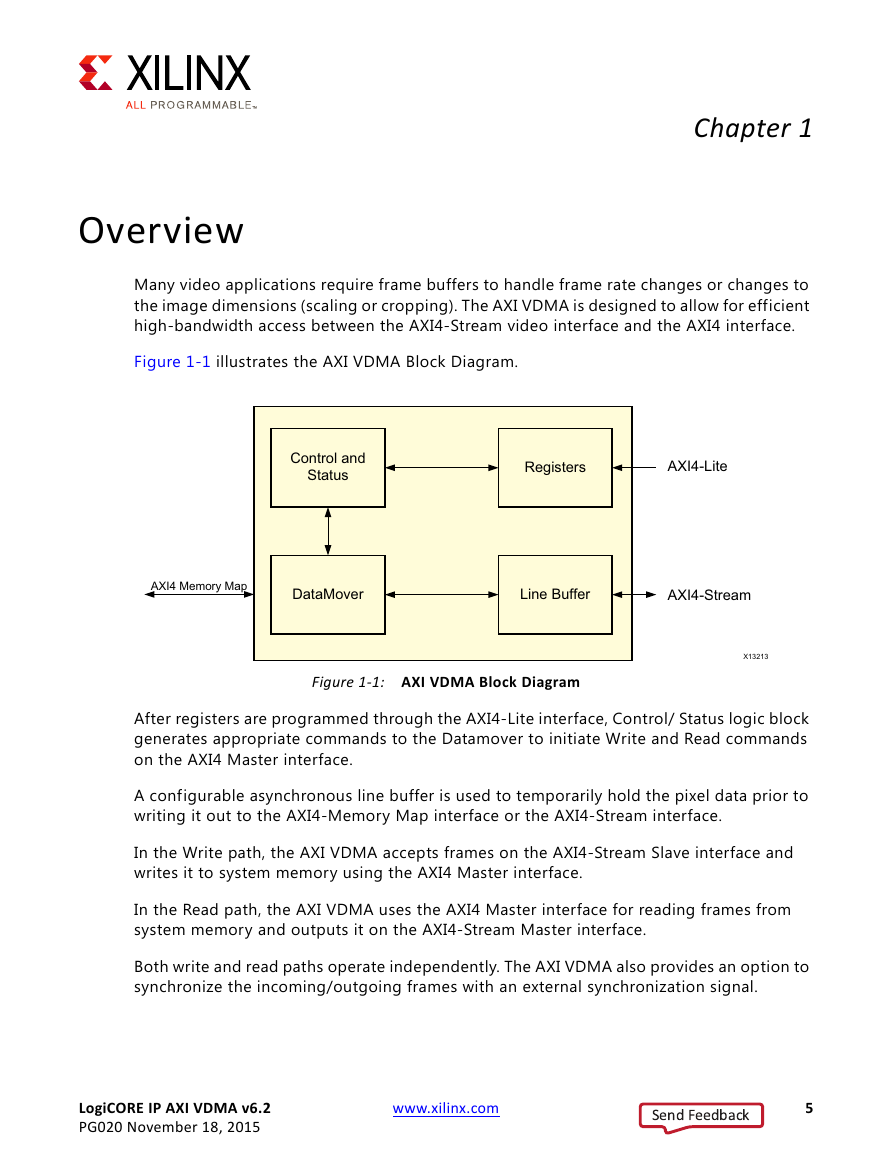











 2023年江西萍乡中考道德与法治真题及答案.doc
2023年江西萍乡中考道德与法治真题及答案.doc 2012年重庆南川中考生物真题及答案.doc
2012年重庆南川中考生物真题及答案.doc 2013年江西师范大学地理学综合及文艺理论基础考研真题.doc
2013年江西师范大学地理学综合及文艺理论基础考研真题.doc 2020年四川甘孜小升初语文真题及答案I卷.doc
2020年四川甘孜小升初语文真题及答案I卷.doc 2020年注册岩土工程师专业基础考试真题及答案.doc
2020年注册岩土工程师专业基础考试真题及答案.doc 2023-2024学年福建省厦门市九年级上学期数学月考试题及答案.doc
2023-2024学年福建省厦门市九年级上学期数学月考试题及答案.doc 2021-2022学年辽宁省沈阳市大东区九年级上学期语文期末试题及答案.doc
2021-2022学年辽宁省沈阳市大东区九年级上学期语文期末试题及答案.doc 2022-2023学年北京东城区初三第一学期物理期末试卷及答案.doc
2022-2023学年北京东城区初三第一学期物理期末试卷及答案.doc 2018上半年江西教师资格初中地理学科知识与教学能力真题及答案.doc
2018上半年江西教师资格初中地理学科知识与教学能力真题及答案.doc 2012年河北国家公务员申论考试真题及答案-省级.doc
2012年河北国家公务员申论考试真题及答案-省级.doc 2020-2021学年江苏省扬州市江都区邵樊片九年级上学期数学第一次质量检测试题及答案.doc
2020-2021学年江苏省扬州市江都区邵樊片九年级上学期数学第一次质量检测试题及答案.doc 2022下半年黑龙江教师资格证中学综合素质真题及答案.doc
2022下半年黑龙江教师资格证中学综合素质真题及答案.doc